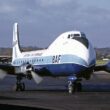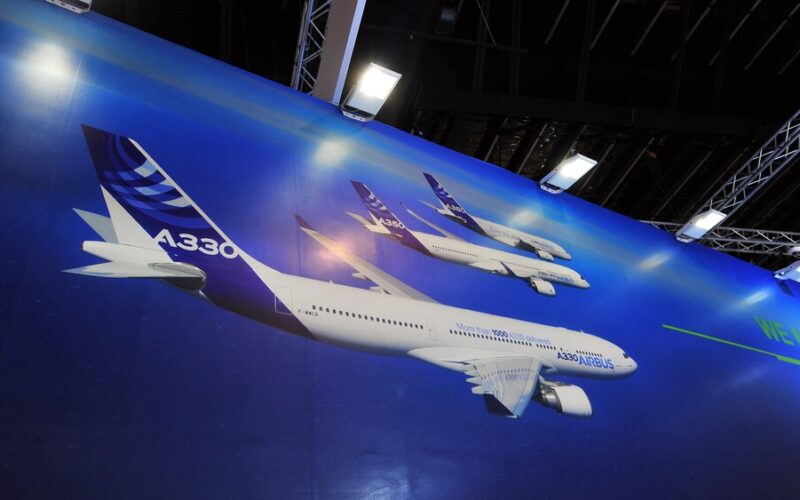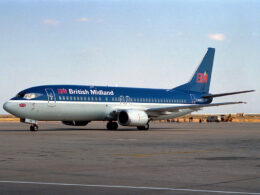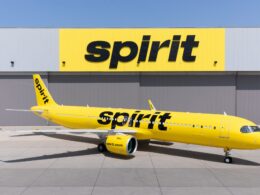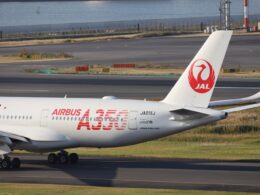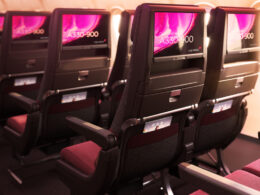Throughout the decades, air travel improved in comfort, entertainment, safety, speed. The process of conceiving an aircraft, seemingly also changed.
From the de Havilland Comet that was born as a result of a study led by Lord Brabazon of Tara, to Juan Trippe, the chief executive at the now-bankrupt Pan Am, influencing Boeing into the 747. Things have not changed today, either: American Airlines (A1G) (AAL) , for example, indicated that it “intends to order 100 of Boeing’s expected new evolution of the 737NG, with a new engine that would offer even more significant fuel-efficiency gains over today’s models.” That order was made in July 2011. In February of the same year, Jim McNerney, the former president and CEO of Boeing, stated that the company will do a new airplane and that Boeing’s “current bias is to not re-engine.”
The expected evolution turned out to be the 737 MAX, despite the biases of the manufacturer. However, manufacturers might not always listen to the customers’ wishes. A prime example is the never-ending rumor mill about the Boeing New Midsize Airplane (NMA), or the Airbus A340. While the former is still just a bunch of drawings on a piece of paper, the latter entered the market with a splish-splash, rather than a splash. Its smaller brother, the A330 managed to amass almost 1,500 orders, including the new engine option (neo) variant. The A340 ended its lackluster career with 377 deliveries. While it might not have been a case of not listening to customers, but rather the advancement of engines and relaxed extended-range twin-engine operations (ETOPS) rules, the A340 did not become the star that Airbus envisioned it to be.
But customers of the A340 are rarely seen complaining, even as of recently. While most of the quad-engine aircraft are being put to retirement, Swiss International Air Lines CEO Thomas Klühr stated to local media that the A340 is “an ideal aircraft for the airline,” as they are much easier to fill than their other long-haul aircraft, the Boeing 777, which seats more than 100 passengers compared to the quad-engine Airbus.
But not everyone is as happy as Klühr.
“[…] if Boeing don‘t get their shit together quickly“
Stated Michael O‘Leary, the CEO of Ryanair, as the company announced its Q1 FY2020 results.
“We were originally expecting 58 aircraft for the summer of 2020. That is now 30 at best. It may well move to 20, it could move to 10, and it could well move to 0 if Boeing does not get their s**t together,” stated O’Leary.
But the outlandish Irish executive hit out at Boeing only for the delay of the 737 MAX’s return. Other than that, the low-cost carrier has repeatedly stated that the narrow-body is a “game-changer,” as it significantly reduces operational costs compared to the previous generation 737, the Next Generation (NG).
So much so, that O’Leary believes the aircraft will be crucial to Ryanair’s position in a post-corona Europe, helping the low-cost carrier solidify its position in the market.
“If they don’t oblige to our requirements,” a relationship review is coming
Warned Qatar Airways’ CEO, Akbar Al Baker. Another outspoken executive warned both manufacturers that if they do not oblige to the airline’s requirements, it will have to review their “long-term business relationships with” Airbus and Boeing. Al Baker also added that the airline does not plan to take up 30 Boeing 737 MAX aircraft, as Qatar Airways simply does “not require any more of the 737 MAXs.” Seemingly all deliveries will be pushed back, as Al Baker stated that the Qatari company “notified both Boeing and Airbus that we will not be taking any airplanes this year or next year.”
But the Boeing 737 MAX was never destined for Qatar Airways. The airline hinted at its post-crisis fleet, which includes four cockpit types from 2024: the Boeing 777 and 787, and Airbus A350 and A321s. The Boeing narrow-bodies were destined to one of the airline’s many investments around the world, Air Italy. The now-bankrupt Milan, Italy-based airline planned to operate as many as 20 737 MAXs in 2021, all leased from the Qatari flag carrier.
Just like Air Italy’s operations shattered abruptly, so did Qatar Airways’ plans to take up Boeing’s newest narrow-body product. Surprisingly, Al Baker did not directly hit out at Boeing for the delays of the 777X, considering he outright canceled the order for the Airbus A320neo over the unsatisfactory performance of the Pratt & Whitney PW1100G engine.
“We have walked away from our first A320neo because it is more than a certain number of days late, so exercised a walk-away clause,” Al Baker stated in 2016. In the end, the Doha-based carrier opted for the A321neo, rather than the smaller version of the aircraft family.
“I want one aircraft to go through hell on Earth basically to make sure it all works,”
President of Emirates Tim Clark stated at the Dubai Airshow 2019 after meeting the head of the Federal Aviation Administration (FAA), Stephen Dickson.
“We need to be absolutely sure that as she comes together, as she starts flying, everything is done in a manner that it should be done,” added Clark. Delays to the 777X program seemingly got on his nerves, as Emirates reduced its order for the 777X and instead, opted for 30 Boeing 787 Dreamliners. The 787 program is another struggling aircraft due to the problems with its Rolls-Royce Trent 1000 power plant and quality control issues in Boeing’s production facility in Charleston, South Carolina, United States.
In September 2019, Clark put it bluntly that if Airbus or Boeing cannot guarantee the reliability of their new products, Emirates will not even look at them:
“I’m not saying we don’t like the A330. I’m not saying we won’t like the 787-9 and -10. I’m not saying we don’t like the A350. These are hugely potent aircraft that eventually will get all their operations sorted out. They are outstanding designs. Unfortunately, they’re not being put together as well as they should be.”
In November 2019, Emirates announced the aforementioned deal to reduce its 777X backlog and signed up for 30 787s instead.

